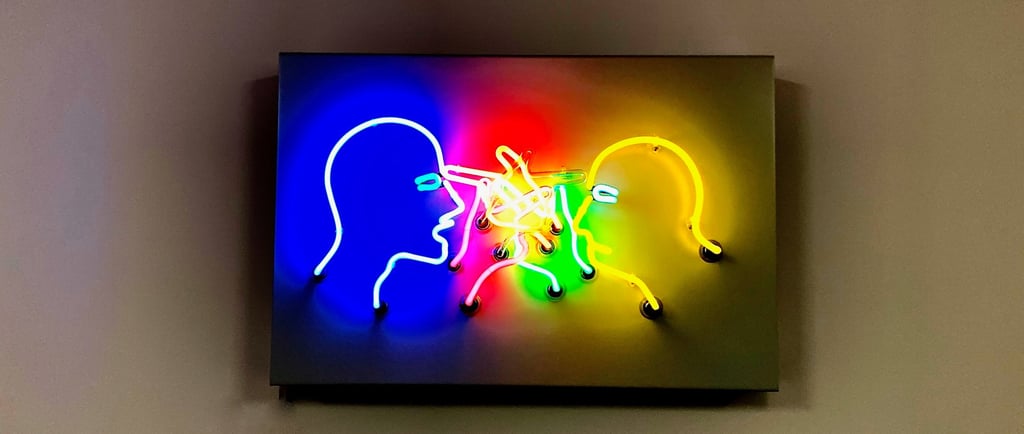The opposable mind
Roger Martin, in his excellent and must-read book “The Opposable Mind: How Successful Leaders Win Through Integrative Thinking,” shows a way to take advantage of conflicting ideas to solve problems.
INNOVATIONBOOKSREVIEWSLEADERSHIP
Ligia Fascioni
4/21/20253 min read


Have you ever noticed that people who think like us are sensitive, smart, and super friendly? And anyone who disagrees with us is ugly, annoying, sloppy, and ignorant?
Yeah, but the thing is, only hanging out with these awesome people doesn’t really help us grow or mature when it comes to making decisions.
It’s actually healthy to be confronted with what’s different, what seems absurd, or even contradictory. That’s exactly what opens our minds and helps us learn (Epictetus already said, “It is impossible for a man to learn what he thinks he already knows.”).
Roger Martin, in his classic and must-read book “The Opposable Mind: How Successful Leaders Win Through Integrative Thinking,” shows a way to take advantage of conflicting ideas to solve problems.
He starts the book with a quote from F. Scott Fitzgerald that says it all: “The test of a first-rate intelligence is the ability to hold two opposed ideas in mind at the same time and still retain the ability to function.” Try that at home, but I’m warning you—it hurts, a lot.
integrative thinking
Roger studied a bunch of leaders and found that the brightest ones had the ability to keep two totally opposite ideas in their minds and, without freaking out about having to choose one or the other, they were able to come up with an original solution that combined the best of both. After a lot of research, he managed to break down the method these exceptional people use intuitively.
Martin called this method “integrative thinking,” and it’s based on the idea that decision-making doesn’t have to be a trade-off (either this or that). We can always choose this AND that if we know how to combine them in a creative and original way.
It’s worth mentioning that the author argues that integrative thinking can’t really be taught, but it’s possible to develop skills in “opposable minds” (those that don’t rule out alternatives) and keep improving decision-making until you reach excellence.
The key sequence
So, by breaking down how these standout leaders come up with brilliant ideas, Roger discovered the following sequence of developed skills:
First, you need to highlight what he calls the salient features for decision-making. This means picking out what’s important in each alternative. Obviously, this varies from person to person, and only practice will keep you from forgetting crucial points. The question here is: “What features do I think are important?”
Second, you have to consider that these salient features are related to each other, and those relationships can be multi-directional and non-linear. So, you need to identify the cause-and-effect links between these things, which he calls causality. The question here is: “How do I make sense of what I see?”
The third step is to build an information architecture so everything follows a logical sequence. It’s important not to lose sight of the big picture while analyzing the parts. Basically, you want to answer: “What tasks will I do, and in what order?
The fourth and final step is resolution, or finding creative solutions. The question is: “How will I know when I’m done?”
Perception x reality
Sounds complicated—and it is—but it’s really enlightening and thought-provoking. I think the only way to really get the idea is with the detailed examples Roger gives in the book, like strategic decisions at Procter & Gamble, Red Hat Software, and Four Seasons Hotels.
But the most fundamental thing in all of this is being able to separate perception from reality. If you can realize that what you see is just part of the issue (your perception, your point of view) and not reality itself, you’re already halfway there. It’s amazing how easily we fall into the trap of thinking that what we see is how things really are. Telling perception and reality apart is the foundation for accepting different ideas (actually, it’s the only way, since we can have infinite perceptions, but not infinite realities).
Roger Martin is a brilliant thinker and, not by chance, he’s also the author of “The Design of Business,” where he introduces the now-famous concept of design thinking—another essential book we’ll talk about another day.
Conclusion
Funny thing is, I read “The Opposable Mind” at the same time as “PO: Beyond Yes and No” by Edward de Bono, which came out ten years earlier (1997) and offers another way to get rid of trade-off decisions (I found it in a used bookstore). Bono is the guy who came up with lateral thinking and the six thinking hats technique, among other cool stuff. Well, all I can say is, I mixed everything together and now my brain is kind of overloaded from too many contradictory ideas…
As far as I can tell, moving away from yes/no decisions seems to be a trend.
What about you guys—do you agree, or not?
